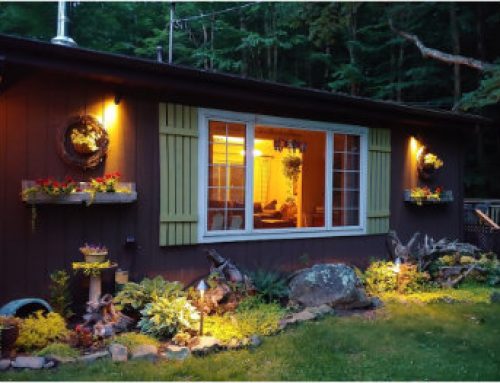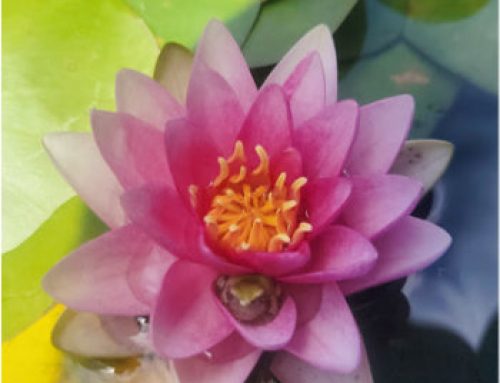
What causes algae in koi ponds and how to get rid of it
Koi ponds are beautiful additions to any property. They provide a habitat for fish that can be used as another form of entertainment, and they also bring an interesting aesthetic to the yard.
Unfortunately, algae is often found in koi ponds due to many different reasons, including the lack of sunlight or too much light which will make it grow faster than it should.
Luckily, there are some ways you can get rid of this pesky plant without harming your fish!
This article will walk you through four different methods for getting rid of algae in your koi pond…
What is algae and why do you need to get rid of it
Algae also goes by a variety of other names such as, pond scum, water weed, blanket weed, and duck weed.
Algae is a plant you will find in ponds that loves to grow on rocks or any surfaces that lie below the water line. In fact pretty much anywhere where the sun is getting some horizontal light there will be algae.
Algae is a type of plant that floats on top of the water surface. It lives off the nutrients released by sunlight and other plankton which it absorbs through its very thin, hair-like tentacles.
This can be problematic because it can block out sunlight for other plants which will die if they don’t get enough light to survive.
Algae also gives off oxygen during photosynthesis, but under certain circumstances, algae will release toxic substances into the water that fish may mistake for food and then end up dying as a result.
Why does algae grow in ponds
Algae will grow in a pond because it absorbs the nutrients from the water. A pond with a lot of algae is usually due to too many plants and animals growing in it.
Algae loves places where it gets a lot of sunlight, which typically happens on rocks or any surfaces below the waterline.
Algae can also grow in places where water gets blocked up under rocks or any other surfaces because it needs to be wet at all times.
How to remove the algae from your pond
There are four different methods to getting rid of algae from a pond:
1) Reduce the amount of light.
2) Use a chemical treatment to kill the algae.
3) Use a heavy duty vacuum cleaner to suck up all the algae.
4) Use a automatic chemical dosing system or pond ionizer
1)Reduce the amount of light in your pond.
Algae needs lots of sunlight; if you reduce the amount of sunlight, algae will die or at least not be able to grow as much.
If you have a pond that receives full sunlight for most of the day you may want to consider using a large patio umbrella or planting some trees to provide some shade on bright sunny days!
2)Use an algaecide.
Algae treatments come in two different forms: chemical ones and natural ones. Chemical algaecides are very effective at killing algae, but some can be harmful to fish and plants, especially if used in large quantities. Natural algaecides use natural ingredients like barley straw extract or chlorine remover.
3)Use a heavy duty vacuum cleaner to suck up the algae .
This is good for small ponds with not too much algae in them, but it can harm wildlife.
4)Use a automatic chemical dosing system or pond ionizer
These are typically the most effective methods to remove algae, however, they are also the most expensive.
An automatic water chemical dosing system will have a price tag between $120 – $150. With water chemical bags that run around $30 that typically last 1-3 months depending on the size of your pond.
A pond ionizer is extremely effective at specifically targeting string algae but it will cost you. Aquascape pond ionizer costs $350. The copper probe will need to be replaced every 1-3 years. Replacements are around $100
Both options are safe for fish and other wildlife.
How often should you get rid of algae?
Algae will grow back if untreated. If you are having major algae problems you should get rid of the algae every week or two using the methods listed above.
Ideally you want to find the method that is most effective for your pond and stick to that method regularly to insure your pond finds it’s natural balance in its ecosystem.
Conclusion
The best way to prevent algae growth in a koi pond is to maintain your pond. You can do this by planting aquatic plants that require low amounts of sunlight and use fertilizers that contain phosphorus.
Keeping the pond clean is also important for eliminating surface algae as well as underwater algae. The more organic matter you have, the more nutrients there are for algae to feed on. Cleaning a koi pond is best done in the spring or fall.
However, even if your pond is well maintained, many times a koi pond will still have some algae growth. If this happens, don’t worry! There are several ways you can get rid of the algae so your pond will be clean and clear.
Whether you’ve been struggling with how to get rid of algae in your koi pond, or if you just want to learn more about this pesky plant and the many ways it can be removed from your backyard pond, hopefully this article has got you covered.
We hope these methods have helped you identify which one is right for your situation! If not, let us know so we can provide additional information on how to tackle any lingering questions.



